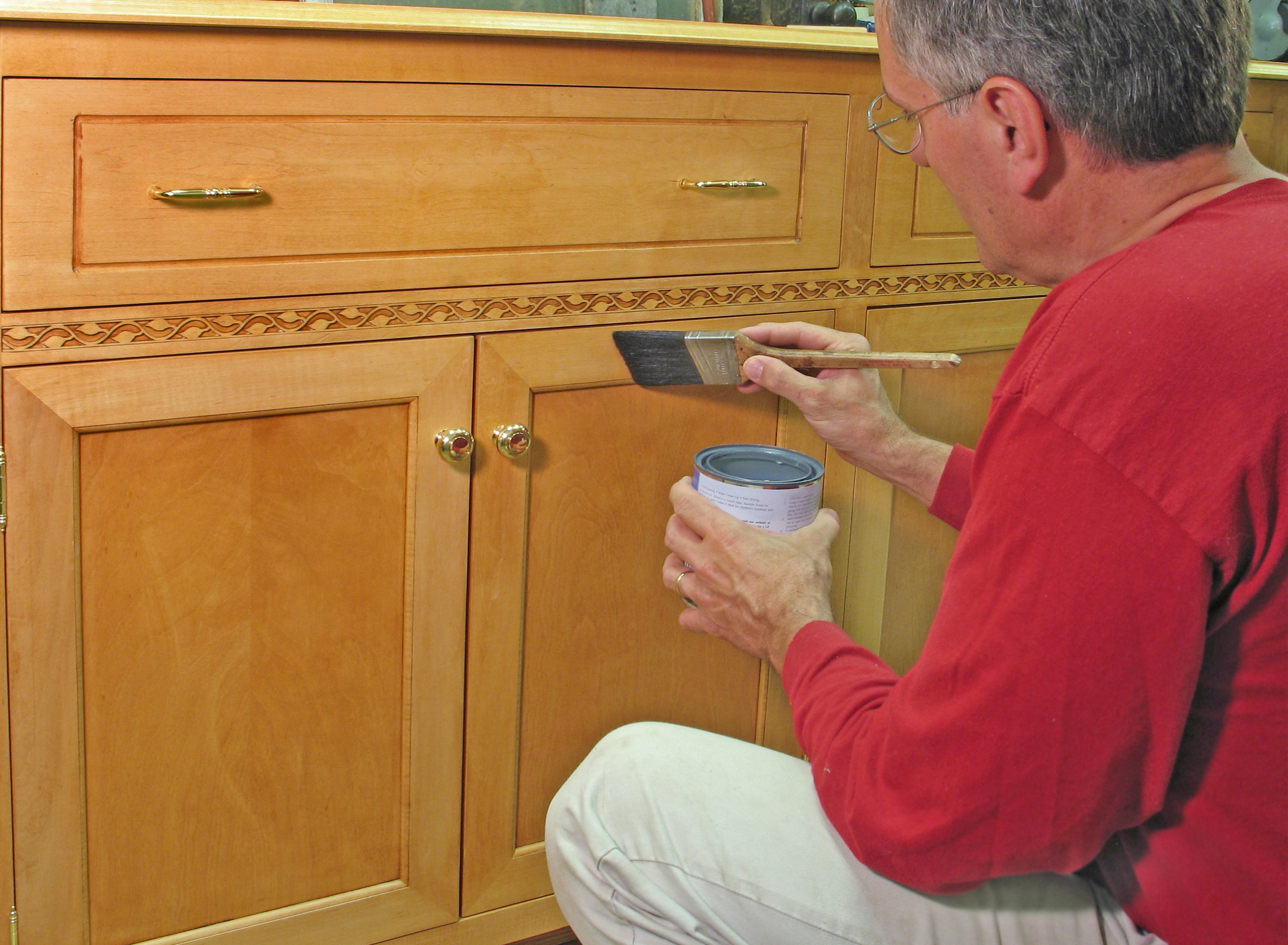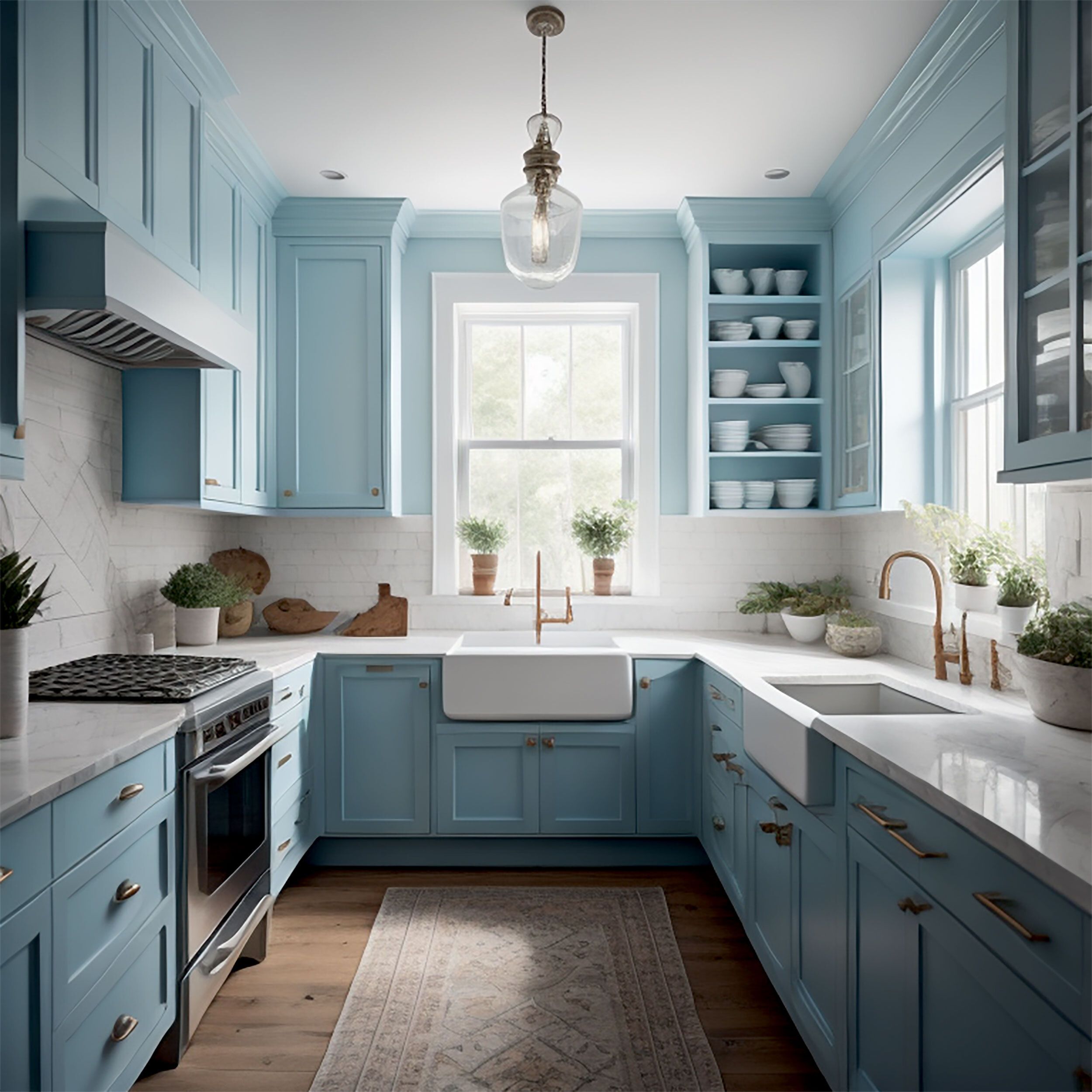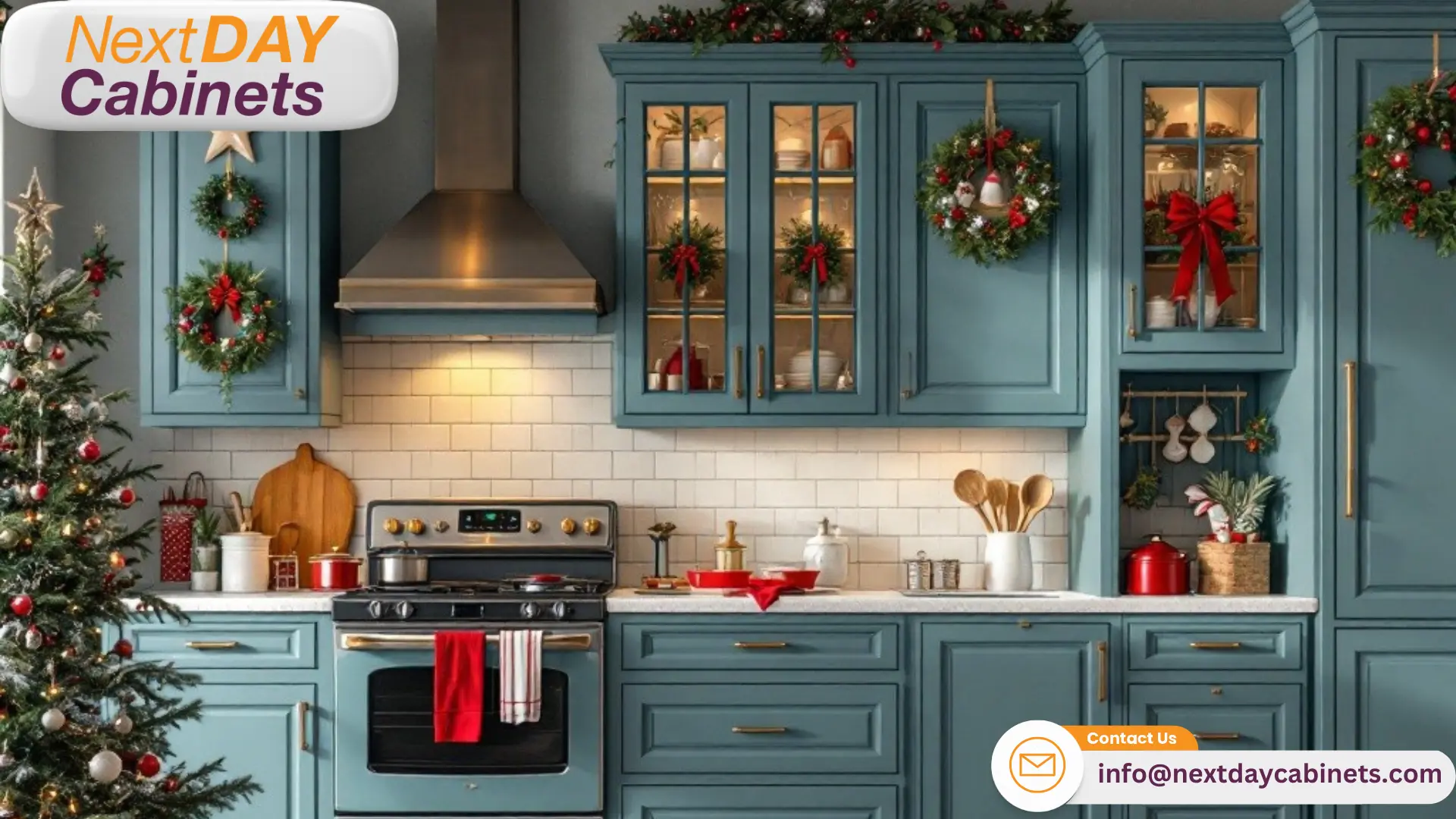Preparing Kitchen Cabinets for Painting

A pristine canvas awaits! Before the artistry of paint transforms your kitchen cabinets, a thorough preparation is essential. This crucial step ensures a flawless finish, preventing peeling and enhancing the longevity of your newly painted surfaces. Proper cleaning removes grease, grime, and old finishes, allowing the paint to adhere perfectly and reveal its true vibrancy.
Cleaning Kitchen Cabinets for Painting
The first brushstroke towards a stunning transformation begins with meticulous cleaning. Different cabinet materials require specific cleaning agents and techniques to avoid damage. The following table Artikels suitable methods for various surfaces.
| Cleaning Agent | Cabinet Material | Application Method | Precautions |
|---|---|---|---|
| Mild Dish Soap and Water | Wood, Laminate | Mix a small amount of dish soap in warm water. Apply with a soft sponge or cloth, rinsing thoroughly and drying immediately. | Avoid excessive water saturation, which can damage wood. |
| Baking Soda Paste | Wood, Laminate | Create a paste with baking soda and water. Gently scrub the affected area, rinse, and dry completely. | Test in an inconspicuous area first. Avoid abrasive scrubbing on delicate finishes. |
| Degreaser (e.g., TSP Substitute) | Wood, Laminate (Check manufacturer’s recommendations) | Follow product instructions carefully. Apply with a soft cloth, rinse thoroughly, and dry completely. | Always wear gloves and ensure adequate ventilation. Test in an inconspicuous area first. |
| Isopropyl Alcohol (70%) | Laminate (only) | Apply with a soft cloth, wiping gently. No rinsing required for this type. | Avoid prolonged contact, and test in an inconspicuous area first. |
Removing Grease and Grime with Household Products
The kitchen’s inherent nature often leaves cabinets coated in a film of grease and grime. Fortunately, readily available household products can effectively tackle this challenge. A solution of warm water and a gentle dish soap, such as Dawn, is often sufficient for light cleaning. For more stubborn grease, a paste of baking soda and water can be applied, gently scrubbing with a soft sponge or cloth before rinsing and thoroughly drying. The gentle abrasiveness of the baking soda helps lift ingrained dirt.
Addressing Stubborn Stains and Sticky Residue
Persistent stains and sticky residue demand a more targeted approach. Imagine a stubborn tomato sauce splatter, a deep crimson stain clinging tenaciously to a light oak cabinet door. Its surface, once smooth, now exhibits a slightly raised, sticky texture. Begin by applying a paste of baking soda and water, allowing it to sit for several minutes to soften the stain. The baking soda’s gentle abrasiveness, combined with the water’s softening action, begins to break down the stain. Gently scrub the area with a soft sponge. The once-vibrant crimson begins to fade, becoming a duller, less intense shade. The texture, previously sticky and raised, gradually softens and smooths out. Repeated applications, along with careful rinsing and drying, may be necessary to completely remove the stain. For exceptionally stubborn stains, a mild degreaser, diluted according to the manufacturer’s instructions, can be used. Remember always to test any cleaning agent in an inconspicuous area first.
Surface Preparation Techniques

The canvas of your kitchen cabinets awaits transformation. Before the vibrant hues of paint can grace their surfaces, a meticulous preparation is paramount. This stage, often overlooked, is the cornerstone of a lasting, beautiful finish. Proper surface preparation ensures paint adhesion, preventing peeling, chipping, and ultimately, disappointment. The following steps will guide you through this crucial process, transforming your cabinets from worn to wonderful.
Cleaning kitchen cabinets for painting – Sanding and priming are essential steps in preparing kitchen cabinets for painting. Sanding creates a smooth surface for better paint adhesion, while priming seals the wood, preventing the absorption of paint and promoting a uniform, even finish. The choice of sandpaper grit and primer type depends on the cabinet material and the existing surface condition. Incorrect choices can lead to uneven paint application and a less-than-perfect outcome.
Sandpaper and Primer Selection
Selecting the appropriate sandpaper and primer is crucial for achieving a professional finish. Different cabinet materials require different approaches. The following guide Artikels suitable options for various materials. Choosing the right tools ensures a smooth, even surface ready for the final coat of paint.
- Wood Cabinets: For smoothing imperfections, start with 120-grit sandpaper, followed by 220-grit for a finer finish. For severe damage, begin with coarser grits (80-100 grit) and progressively increase the grit. Primers: Oil-based primers offer excellent adhesion and stain blocking for bare wood or heavily stained surfaces. Water-based primers are a low-VOC alternative and work well for previously painted surfaces.
- MDF (Medium-Density Fiberboard) Cabinets: MDF is a denser material, requiring careful sanding to avoid creating scratches. Begin with 180-grit sandpaper and move to 220-grit for a smooth finish. Primers: Water-based primers are generally preferred for MDF as they minimize the risk of swelling.
- Laminate Cabinets: Laminate surfaces are delicate. Light sanding with very fine-grit sandpaper (320-grit or higher) is usually sufficient to prepare the surface for better paint adhesion. Use a sanding block to avoid damaging the surface. Primers: Adhesion primers specifically designed for laminate are essential for ensuring the paint adheres properly.
Filling Gaps, Cracks, and Holes
Addressing imperfections such as gaps, cracks, and holes is a critical step before painting. Proper filling ensures a smooth, even surface and prevents paint from settling unevenly, highlighting the imperfections instead of concealing them. Wood filler is a common choice, but its application requires precision and patience.
Step-by-Step Guide: Filling a Noticeable Crack
- Clean the Crack: Remove any loose debris or old paint from the crack using a putty knife or scraper.
- Apply Wood Filler: Using a putty knife, carefully fill the crack with wood filler, pressing it firmly to ensure complete penetration. Slightly overfill the crack to allow for sanding.
- Smooth the Surface: Use a damp putty knife to smooth the surface of the filled crack, removing any excess filler.
- Allow to Dry: Let the wood filler dry completely according to the manufacturer’s instructions. This is crucial for proper adhesion and preventing cracking after painting.
- Sand Smooth: Once dry, sand the filled area smooth using progressively finer grits of sandpaper, starting with a coarser grit and finishing with a fine grit (e.g., 120-grit followed by 220-grit).
Smoothing Techniques
After sanding and priming, achieving a flawlessly smooth surface is paramount. Different tools offer unique advantages, and choosing the right one depends on the size and nature of the imperfections. Careful smoothing prevents imperfections from showing through the final paint coat.
Putty knives are excellent for filling larger gaps and smoothing out larger areas of filler. Sanding blocks, on the other hand, provide more controlled sanding for smaller areas and ensure even pressure across the surface, minimizing the risk of creating uneven sanding marks. Using both in conjunction often yields the best results. For truly flawless surfaces, a final light sanding with very fine grit sandpaper is often beneficial before painting.
Painting and Finishing: Cleaning Kitchen Cabinets For Painting

The culmination of your cabinet preparation arrives—the moment to unveil the transformative power of paint. Choosing the right paint and employing skillful techniques will determine the longevity and aesthetic appeal of your newly painted kitchen cabinets. The process, while demanding precision, offers a rewarding journey towards a beautifully refreshed kitchen.
Selecting the appropriate paint is paramount. Oil-based paints offer superior durability and a harder, more resistant finish, ideal for high-traffic areas like kitchen cabinets. However, they possess a stronger odor and require longer drying times. Latex paints, conversely, are easier to clean up, dry faster, and offer a wide array of colors. They are generally less durable than oil-based paints, but advancements have significantly improved their resilience. The choice hinges on your priorities—durability versus convenience.
Paint Application Methods and Techniques
The application method significantly impacts the final finish. Brushes provide excellent control, ideal for detailed work and achieving a smooth, even coat, particularly in corners and intricate details. Rollers are efficient for larger surfaces, offering a faster application process, but may leave a slightly textured finish if not expertly handled. Spray painting offers the smoothest finish, but requires specialized equipment, proper ventilation, and meticulous preparation to avoid overspray.
Regardless of the chosen method, multiple thin coats are superior to one thick coat. Allow each coat to dry completely according to the manufacturer’s instructions before applying the next. Consistent, even brushstrokes are crucial. For brushes, employ smooth, overlapping strokes in the direction of the wood grain, avoiding heavy pressure to prevent brush marks. For rollers, maintain a consistent speed and pressure, ensuring complete coverage without leaving streaks or drips. With spray painting, maintain a consistent distance and even application to avoid runs or drips.
Ventilation and Drying Time, Cleaning kitchen cabinets for painting
Adequate ventilation is non-negotiable during the painting process. Oil-based paints, in particular, release strong fumes that can be harmful if inhaled. Open windows, use fans, and consider wearing a respirator to ensure a safe and healthy work environment. Allow ample drying time between coats, as insufficient drying can lead to peeling, chipping, or a less durable finish. Always follow the manufacturer’s drying time recommendations.
Protecting Surrounding Areas
Protecting surrounding surfaces is crucial to avoid accidental paint spills or splatters. Thoroughly cover countertops, floors, and adjacent walls with drop cloths, securing them with painter’s tape to prevent shifting. Painter’s tape, applied carefully to edges and trim, creates clean lines and prevents paint from bleeding onto unwanted areas. Remove the tape carefully once the paint is completely dry to avoid pulling up the paint.
